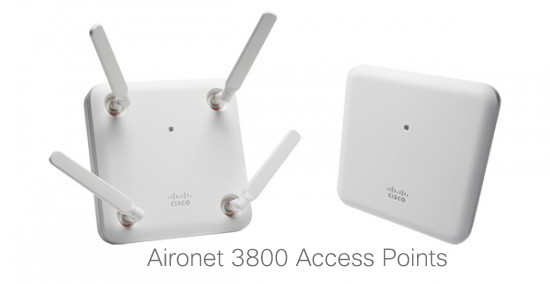As a founding member of the NBASE-T Alliance℠, Cisco is proud to celebrate IEEE’s approval of IEEE 802.3bzTM (2.5G/5G BASE-T) as a new Ethernet standard. From the start we saw the issue, understood the opportunity and realized the value to customers. Some of our most talented engineers are investing their time and energy in the alliance. Today, Cisco engineers such as Peter Jones hold key leadership positions within the Alliance. We have been a driving force behind the industry momentum that has led to IEEE ratification in less than two years.
And we’re not just committed to the concept, we’re committed to driving adoption. Over these last two years we have shown our leadership by introducing the industry’s first NBASE-T technology in our Cisco Catalyst Portfolio and we continue to expand our support in across our enterprise networking and Meraki solutions. (Want more details? Expanding Your Network, Creating More Bandwidth, NBASE-T and Wave 2 Just Make Sense, Multigigabit and Wave 2 Wi-Fi )
More and More. Faster and Faster.
 As new 802.11ac Wave 2 wireless technology is being deployed the need to offload more and more data at higher and higher speeds from the wireless to the wired network has never been so critical.
As new 802.11ac Wave 2 wireless technology is being deployed the need to offload more and more data at higher and higher speeds from the wireless to the wired network has never been so critical.
Going beyond 1 Gb/s with existing Cat5e and Cat6 cables was little more than a talking point two years ago. But now with NBASE-T, we have the ability to extend the life of an enormous asset —your wired network. The Cat5e and Cat6 installed in just the last 15 years now exceeds an estimated 70 billion meters of cabling.
Costly. Painful. Sometimes just not doable.
For some, a re-cabling isn’t even possible. For others, unfeasible. For the rest, re-cabling is just costly and disruptive. It is easy to imagine the value of delivering multi-gigabit speeds to the more than 1.3 billion Cat 5e/6 outlets worldwide if it doesn’t require the huge head-ache and expense of a major cable replacement. The promise of NBASE-T has to have nearly every CFO, CTO, building manager and IT group breathing a huge sigh of relief.
 Solving the Problem – upgrade a switch
Solving the Problem – upgrade a switch
Taking lessons learned from a now mature 10GBASE-T technology, NBASE-T uses a type of signaling that boosts data throughput over twisted pair copper cable and takes us beyond previous limitations (up to 100 meters of Cat 5e/6). So by upgrading the networking equipment, you can dramatically boost your network performance whether it’s an enterprise, service provider or home network.
Cisco devices supporting NBASE-T are:
Cisco has been a key driving force behind the IEEE 802.3bz standard definition and the growth of the industry eco-system. As part of the NBASE-T Alliance℠, Cisco is focused on promoting and advancing 2.5GBASE-T/5GBASE-T as well as insuring the success of testing and interoperability events to facilitate the development and deployment of interoperable products.
Want to learn more?
- NBASE-T press release
- NBASE-T blog post by Peter Jones
Review this content on TechWiseTV:
Cisco Live Ethernet Evolving – Ethernet at New Speeds…
Removing the Wireless and Wired Bottleneck with NBASE-T
Follow:
- Cisco Enterprise @CiscoEnterprise
- NBASE-T Alliance @NBASETAlliance
- NBASE-T Chair @petergjones
Related Alliance Blogs
- NBASE-T Alliance Raising the Gold Bar
- Ethernet Alliance 2.5 Gbps and 5 Gbps Ethernet Goes Mainstream









I’m very proud of what we have achieved as a team. It’s not often you get a chance to contribute to something that can move the entire industry.
Great work on the speed improvements. However for clarification, Pluto is 7.5 billion kilometers away. If 70 billion meters of Cat5e/Cat6e have been installed, although still impressive, it is less than 1/100 of the distance to Pluto, not 10 trips.
Glad someone caught that.
Oops 🙁
Efstratios Gavas – thanks for finding this mistake. I’ve removed this comment from the blog.
Nice one. Standards bringing improved benefits. Thank you for sharing this blog post and links as well. Deeply appreciated.
Thank you Dr. José A. Wong Pérez. I appreciate the positive feedback.
Are we at a point that we are utilizing the 1 Gbps at the full speed?